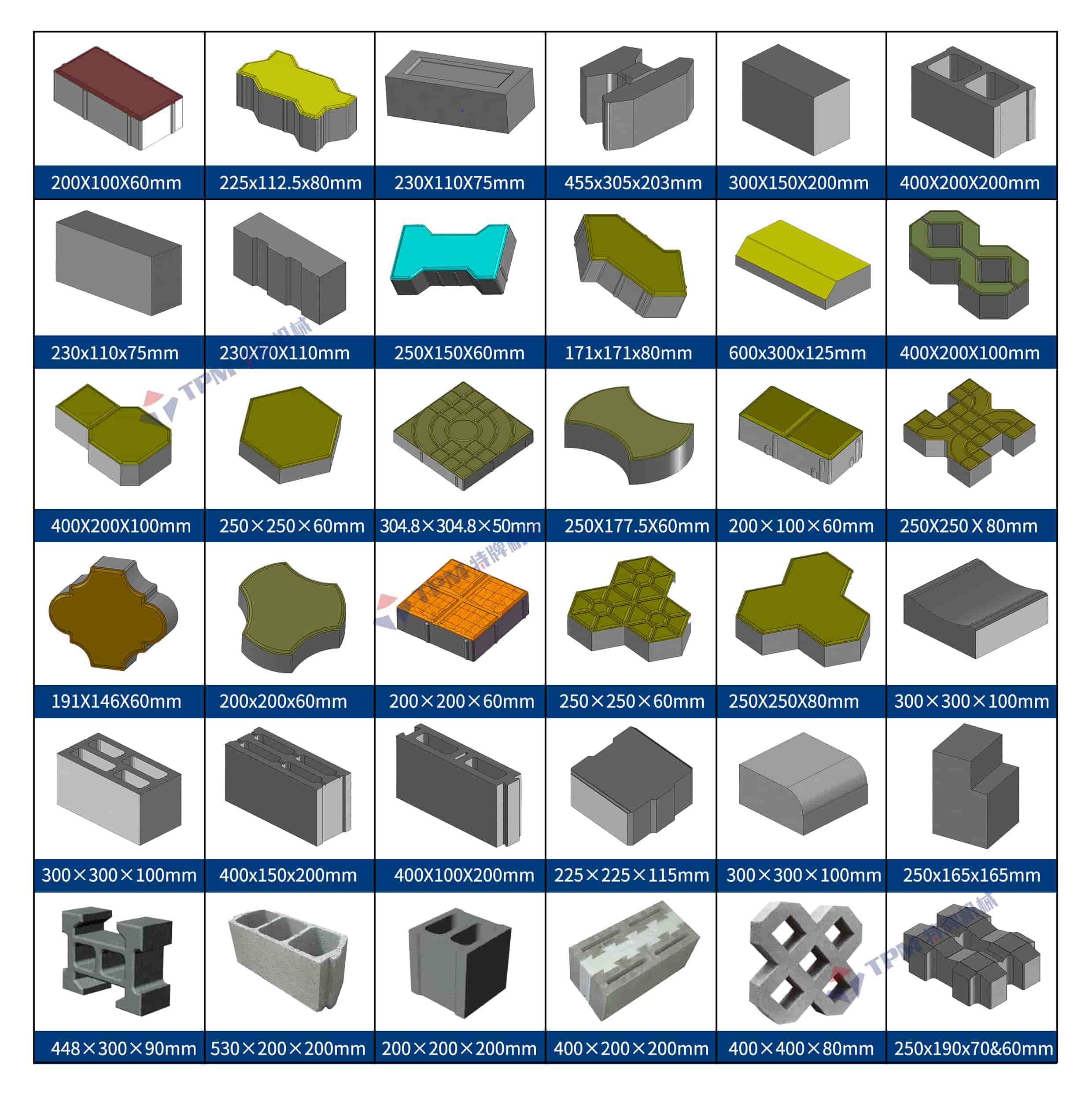The Production Process of Concrete Blocks:
Concrete blocks, also known as concrete masonry units, are rectangular building blocks made from a mixture of cement, aggregates (such as sand or crushed stone), and water. These blocks are commonly used in construction for building walls, partitions, and various other structures.

The Process of Producing Concrete Blocks
Following procedures shows how concrete block production machine manufactures concrete blocks:
Mixing:
The first step is to prepare the concrete mixture. Cement, sand, aggregate (such as gravel or crushed stone), and water are the primary ingredients. These materials are mixed in predetermined proportions in a concrete mixer until they form a homogeneous mixture. The mixing process ensures that the cement is properly distributed throughout the mixture, providing strength when cured.
Video Of Mixing process for Concrete Materials:
Hydraulic press & vibration:
After mixing, the concrete materials are fed into mold cavities uniform. The block making machine's hydraulic system applies pressure on the concrete to compact it and remove any air voids. This pressure is usually applied through hydraulic cylinders. At the same time, vibration is applied to the molds. Vibration helps to further consolidate the concrete mix, ensuring uniformity and density throughout the block. The purpose of combining hydraulic pressure and vibration is to achieve optimal compaction and eliminate any potential weak spots in the blocks.
Curing:
After production, the blocks need to be cured immediately to gain sufficient strength. Curing is a controlled process that involves maintaining a suitable environment for hydration and hardening of the cement. The blocks are typically stacked and covered to prevent moisture loss. Various methods can be used for curing, such as moist curing with water sprinklers, steam curing, or curing in a controlled environment chamber. During the curing process, the chemical reactions between the cement and water continue, leading to the hardening and strengthening of the blocks.
Usually curing requires one day inside curing(keep blocks under simple shed) and the next day take them outside, put under sun and do water curing(every day 2~3 times depending on local weather condition). The outside curing process takes approx 7 days to complete. However, in some case, in order to speed up the curing time and deliver to end client timely, steam curing method can be adopted. This will require 24 hours only to raise up the temperature inside curing chamber.
Cubing:
Once curing is done, the dry blocks will be separated from pallets and released onto wooden tray or ground as a cube. The cubing for finished products can be done manually or via offline palletizer machine for concrete blocks. The offline palletizing machine(also called as offline cuber), is very suitable for handling palletization of all types of concrete products, such as hollow blocks, solid bricks, solid blocks, paving stones and curbstones etc. This type system can greatly help cut down block factory management cost by using less manpower and improve company image as well.
Servo Controlled Offline Palletizing Machine/Brick palletizer machine for concrete blocks:
Links: TPM Bangladesh
Copyright 2025 @ Fujian Tepai Machinery Co., ltd. .All Rights Reserved.  Network Supported
Network Supported
Sitemap | Blog | XML | Privacy Policy